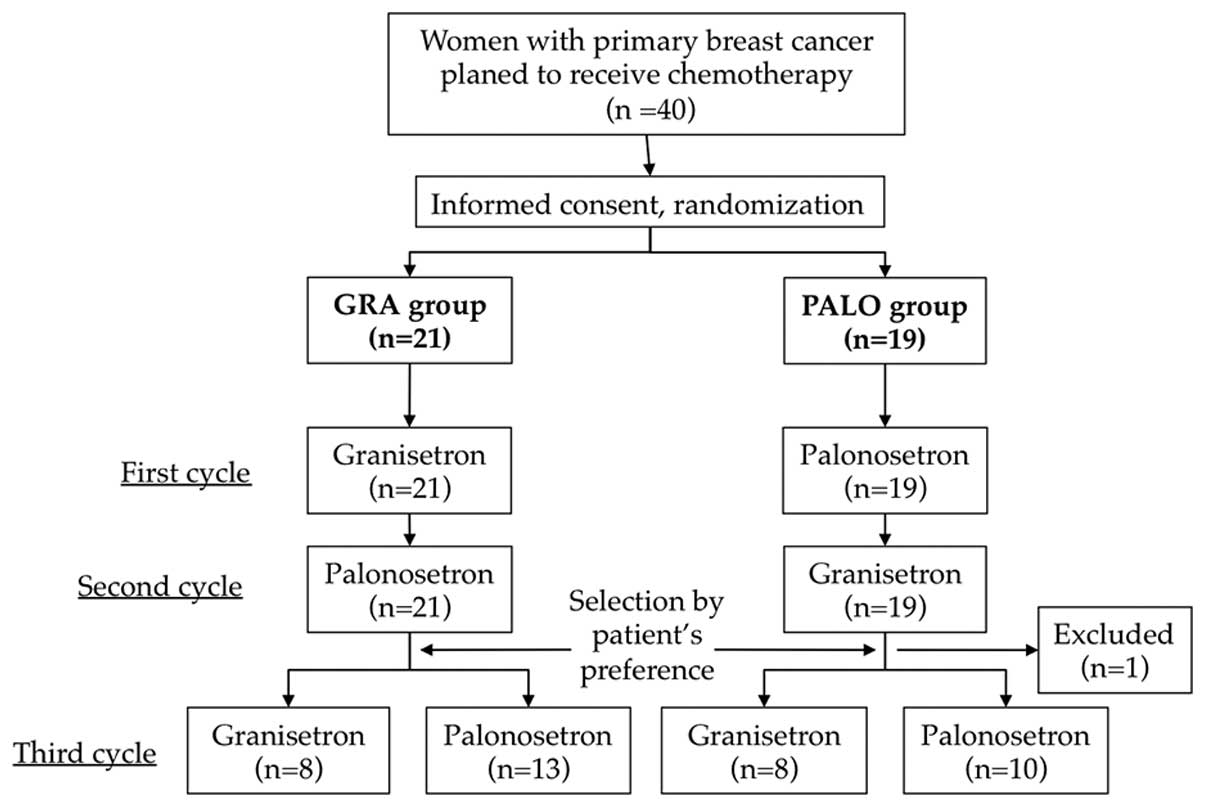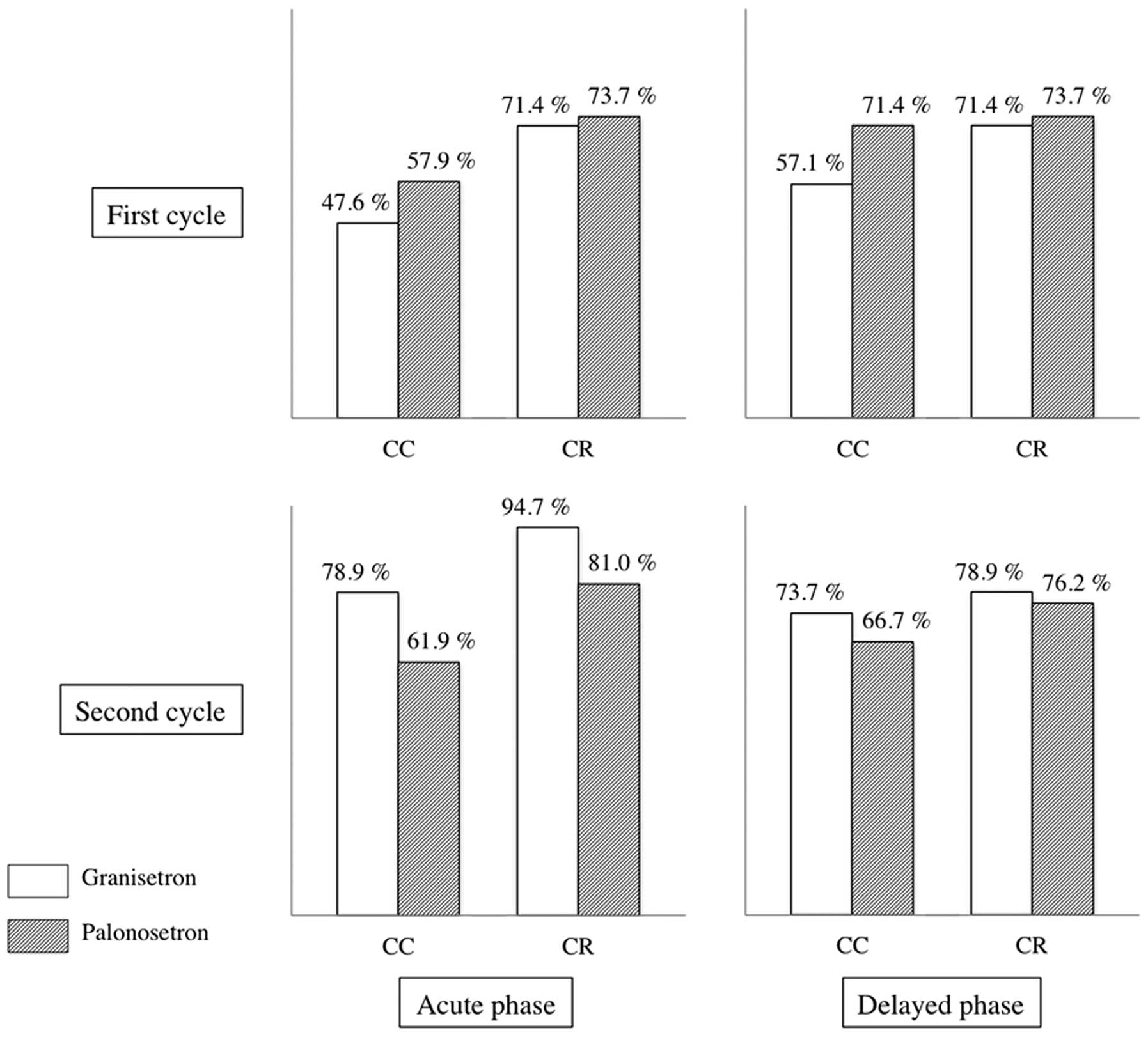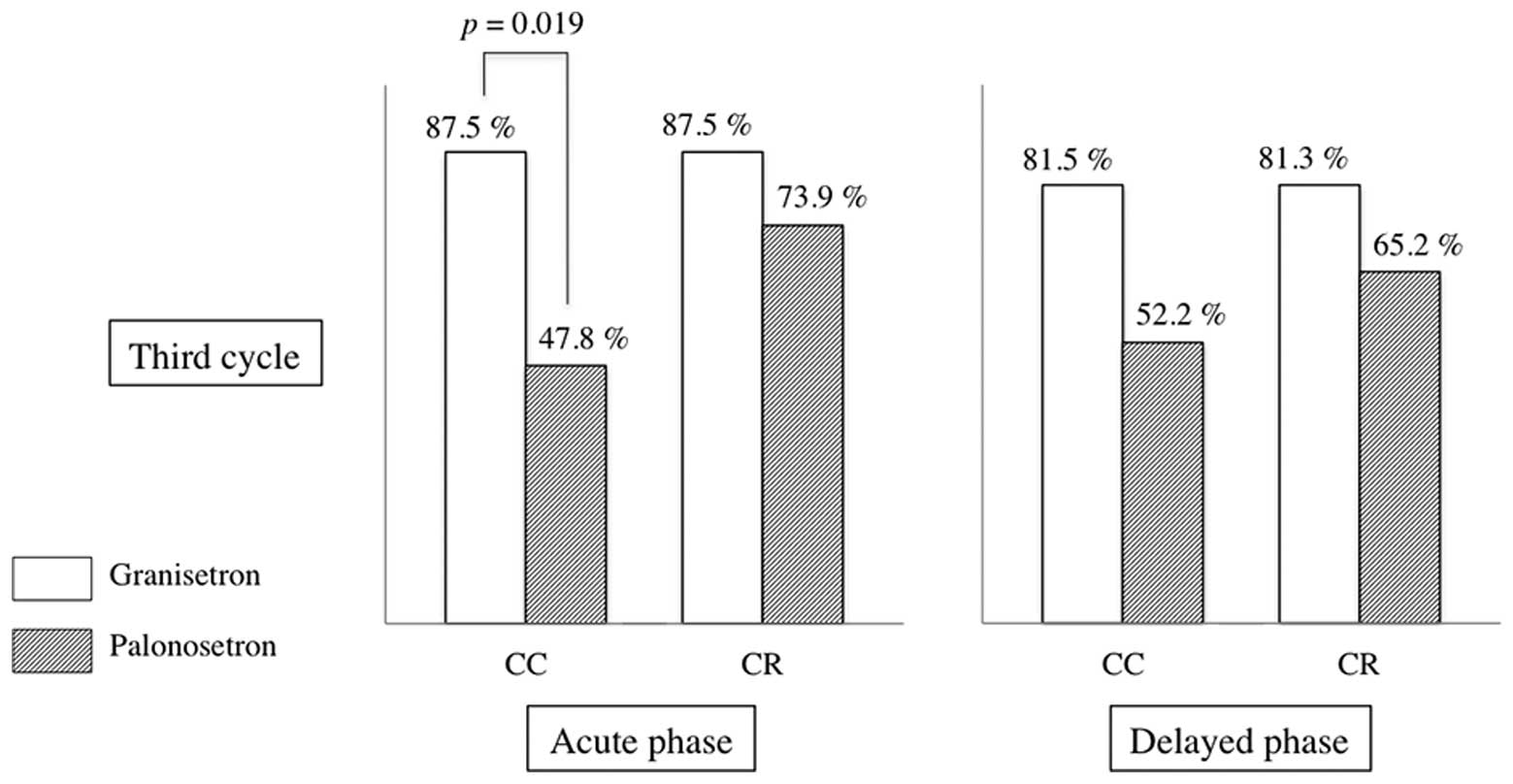Comparison between the antiemetic effects of palonosetron and granisetron in breast cancer patients treated with anthracycline‑based regimens
- Authors:
- Published online on: October 24, 2014 https://doi.org/10.3892/ol.2014.2640
- Pages: 119-124
Metrics: Total
Views: 0 (Spandidos Publications: | PMC Statistics: )
Total PDF Downloads: 0 (Spandidos Publications: | PMC Statistics: )
Abstract
Chemotherapy‑induced nausea and vomiting is a serious adverse side‑effect of anthracycline‑based chemotherapy regimens, in patients with breast cancer. A combination of three drugs, 5‑hydroxytryptamine (5‑HT3) receptor antagonist, aprepitant and dexamethasone, is recommended for antiemetic therapy. Palonosetron (PALO), a novel 5‑HT3 receptor antagonist has been identified to be effective against delayed nausea and vomiting. In this study, the results of PALO for patients who received anthracycline‑based chemotherapy were compared with that of granisetron (GRA) using a crossover study design. This study evaluated the efficacy of antiemetics in the first cycle of chemotherapy, as well as the second and third cycles. A total of 21 patients and 19 patients were assigned to PALO and GRA treatment groups during the first cycle of chemotherapy, respectively. The patients switched to the other antiemetic drug for the second chemotherapy cycle (PALO followed by GRA or GRA followed by PALO). The patients could select PALO or GRA antiemetics for the third cycle, according to their preference. A total of 21 patients selected PALO and 18 patients selected GRA in the third cycle, and one patient was withdrawn from the study as their third cycle questionnaire was not obtained. No significant differences between PALO and GRA were identified in first and second cycles. However, during the third cycle, a significant difference was observed in acute‑phase complete control of emetic events between the PALO and GRA groups, which was defined as no emetic episode, no additional antiemetic treatment and no more than mild nausea, between PALO and GRA. These results demonstrated that changing antiemetics may affect the efficacy of antiemetics. This study indicates that alteration of antiemetic regimens, including drug combination and order, may improve the efficacy of antiemetic treatment.












